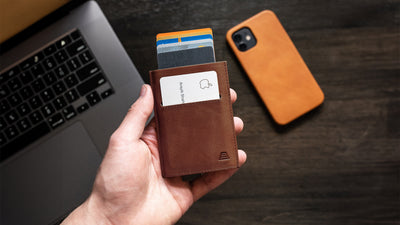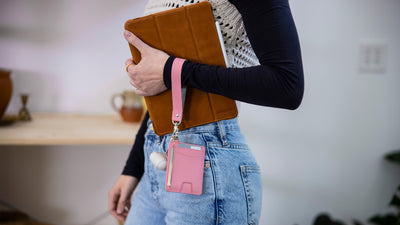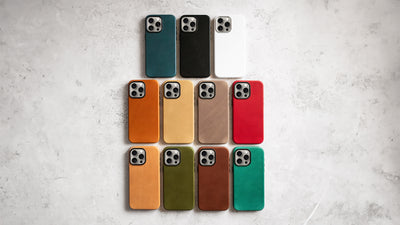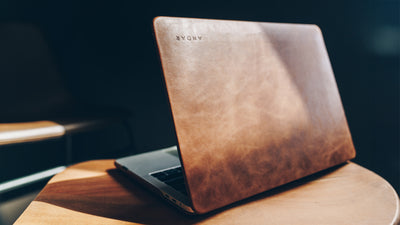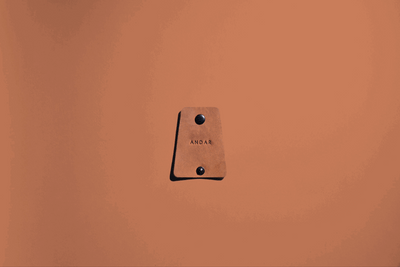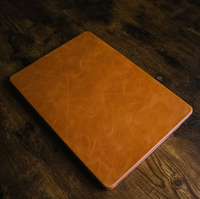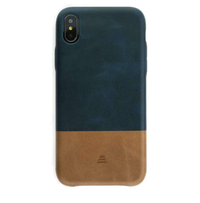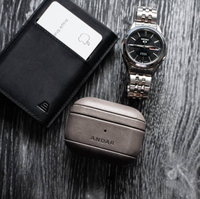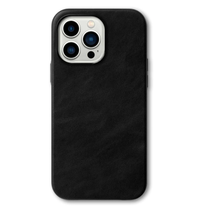The Blog
Leather Patina: Everything You Need To Know About Aging Leather
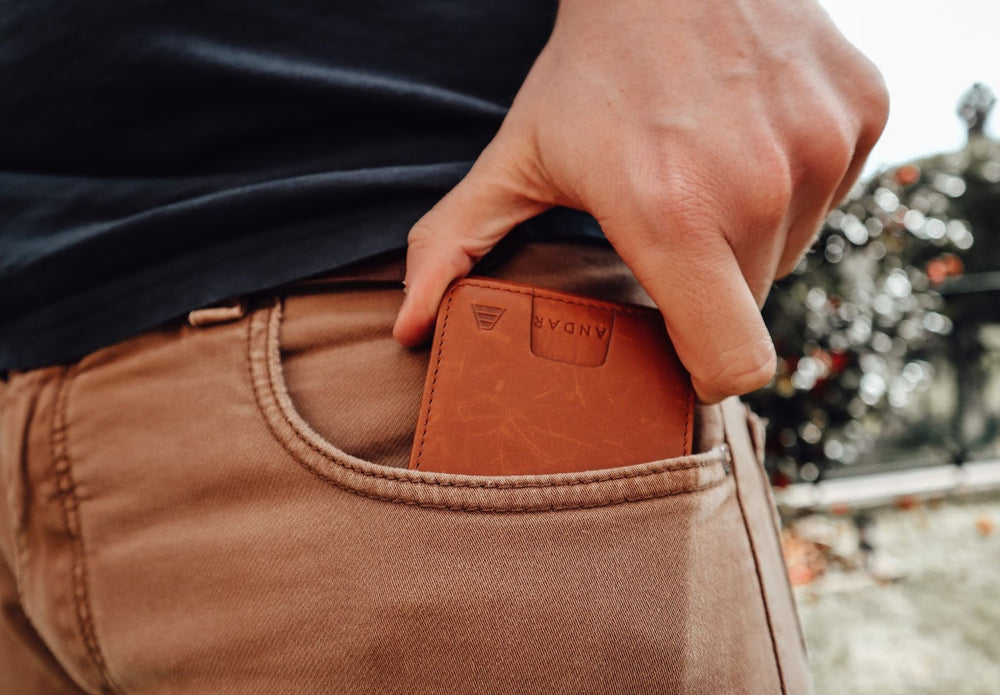
Aging is a natural part of life. It shows your past experiences, your joy, your sadness. In the past, aging was a thing of honor and something to be praised. We ran to our elders for advice. We have gotten away from this, but we still carry over some aspects of this long-forgotten way of being.
As our culture shifts more toward a synthetic, temporary, and quick way of consumption, let Andar offer you an alternative: something that is natural, long-lasting, and, more importantly, shows the inherent grace in aging.
Leather’s “patina” refers to the beautiful, unique marks that leather develops over time and with use. While there is room for a clean, polished, uniform look for some leather products, in general, it is more attractive to have leather that looks worn in some areas. This will showcase the true nature of your personal use of the product.
Below we look at what causes leather to develop a patina, what types of leather develop a patina, and what to do to speed up or slow down patina in your leather product.
What Causes Leather Patina to Show?
As already stated, leather patina is the word for natural usage marks that show up on high-quality leather products. In the industry, these marks are generally desirable as they are a stylistic plus and a showcase for the manufacturer of both quality and durability.
However, a very understandable and common question is: “What causes a patina to develop?” We will break down the main causes of patina development. The factors listed will not be all-inclusive but rather focus on the most common and important factors.
Note that these factors work in tandem with each other to develop your leather’s patina and are not aging your leather in a silo.
Moisture
Because high-quality leather is generally quite supple, it tends to take in a good amount of moisture. Some high-quality, full grain leather is definitely water-resistant. However, this does not mean that consistent moisture over a long period of time (combined with the other factors below) will not start to change how the leather looks.
Well-conditioned and clean leather will start to develop a healthy patina. But, if your leather is not properly cared for, this moisture will dry your leather out and actually work against you. Your leather will not look as good as it possibly can.
Andar provides a solution to this and many other types of poor leather care with helpful blog posts about caring for your leather, along with our product, The Leather Cream. This cream will keep your full grain leather products as supple as they should be while also leaving enough natural properties for your leather to start to develop its own personal patina. It hits a beautiful middle ground.
Oils From Your Hands
The same thing that will help crime scene experts find the fingerprints of a serial killer can be thanked for also helping your leather look great. Sure, these may seem unequal in terms of importance, but the science is clear about your finger oils’ usefulness in a variety of things, including how it helps your leather develop a unique and beautiful look.
Because the oil seeps into the supple finish of most leathers, the moisture interacts with the oils from your hands to wear out certain parts of your leather products. Generally, leather products that you hand the most, such as a belt or wallet, will develop a patina much faster than products that you do not handle as much. This is due to your hands’ oils impacting the development of the patina.
Sunlight and Heat
These factors are a surprisingly large part of your leather developing its patina. Instead of contributing to the individual marks or portions of your leather goods that have scratches themselves, this softens and breaks down the leather’s finish slowly. It makes the leather a bit more pliable for the other elements to take their effect.
Because heating and sunlight are an integral part of the tanning process, it makes sense why these two elements impact the leather as a whole so much. They change the chemical makeup of the leather.
Even goods that are generally kept away from the sun will be impacted by this, especially goods that have contact with skin or your body, such as your belt or wallet. Through long hours in your pants, your wallet will intake a large amount of heat from your body.
Dye From Clothing
This element might be a surprising one for many reading this. The chemicals used to dye clothing actually impact leather a good amount, especially real indigo, which most jeans are made with. The chemicals seep into the leather much like oils, and do their best to break down and dye the leather.
They in no way succeed in actually dying the leather but do succeed in breaking down the leather’s protective properties, thus making it easier to warp or develop the patina (depending on the care the leather is given).
Debris
This category is intentionally broad. The debris can come from anything in your pocket that is jingling around with your full grain leather wallet or from rust and dirt that is being collected by your belt. It can also come from the dirt that naturally begins to build up in your leather bag.
The debris is generally thought of as the star of the show when developing patina, as they make the most marks on your leather. The other elements will generally act to prepare the leather to be marked, while the dirt and debris category does the actual marks themselves.
Have you ever wondered why your beautiful backpack will begin to wear on the bottom corners? Or why your wallet seems to be impacted near the crease? Or why the belt wears around the loopholes?
This is because due to the other factors, your leather can take on some physical abuse from the things that come in contact with it. The debris that it encounters on a daily basis will begin to show in its look and feel.
The Types of Leather That Develop the Best Patina
Some leather will develop patina extremely quickly and look great. Other leathers will take on a patina and look unfortunate (this is generally not referred to as patina, though). While other leathers still will look the same years later as the day you bought it. Knowing what leather you have and whether or not you expect a patina will be helpful as you think about what your leather will look like years from now.
Leather is an investment and one that is rooted in the future. We at Andar expect our leather to last a long time, so we hope that you think about the future of your leather nearly as much as we do.
Full Grain Leather
Unsurprisingly, we will start with how full grain leather develops a patina. Also, unsurprisingly, full grain leather is one of the best types of leather at developing a rich, personal patina over time and with use.
As a patina is a very visible sign of quality, our quality full grain leather develops a beautiful patina that will continue to show the true care we have put into our leather products. You will not be disappointed by your Andar leather’s patina for years to come.
Top Grain Leather
Top grain also tends to develop a long-lasting and beautiful patina through use. Although it does not look as rich and natural as full grain, the top grain leathers will still look great with extended use. A problem sometimes arises when this leather wears too quickly, so more intensive care is needed for the leather to develop the patina before really looking tattered.
Suede Leather
Suede leather has a tough time developing a patina as the underside of the hide does not ever look smooth and supple enough to take in wear and other elements to develop a patina. Generally, suede will look grimy and tattered instead of beautiful with wear.
PU Leather
PU leather, or synthetic leather, also has no possibility of developing a patina as it is made primarily of plastics. Worn plastic never looks good, so do not expect anything made with PU leather to develop a patina.
Genuine Leather
To many consumer’s surprise, genuine leather does not develop a patina. Since the leather is usually many pieces of cowhide stitched together, it really struggles to have enough durability to develop a beautiful patina. It is more likely that genuine leather will rip and tear before developing the patina.
How To Speed Up or Slow Down Your Leather’s Patina Development
Even though a leather patina is a show of quality, at the end of the day, your leather’s look is your decision. You have purchased it, and you make the call. If you do not want your leather to look like it has been scratched or used at all, there are ways of keeping even the most absorbent of leather from showing signs of wear.
Conversely, there are ways to speed up your leather’s development of a patina if you are looking to get your leather looking old and worn in a pinch. Here we will break down how to achieve both goals.
Slowing Down
The simple answer to this question is to keep your leather goods away from the elements listed above that wear down your leather. However, there are a few strategies to doing this that you may find helpful, as well as a word on cleaning and conditioning your leather.
When trying to keep your leather goods from wearing, the most important thing is keeping them away from the things that most wear them down. Keep your wallet out of your pocket, or if it is in your pocket, keep other things out of that same pocket. Do not wear your nice leather belt to your job site. These simple tasks are easy to implement. However, think about why you have high-end leather if you do not want it to show its quality. We love to let leather shine.
After this, keeping your leather clean is one of the best ways to keep it from developing too fast or too much of a patina. Since debris is one of the most common wearers of leather, it is important to keep your leather clean. Do this with chemicals that are not harsh, and try to use a microfiber lint-free rag to keep the fibers from rubbing your leather raw.
In addition, drying your leather after cleaning it is vital to keeping it looking new and fresh. Keep it in a room temperature area away from moisture and sunlight and let it air dry for a full day to get the best results. Cleaning your leather is an important step even if you want patina and is a necessary and regular step if you want to slow a patina down.
As stated earlier, a good leather cream will help with keeping your leather from wearing too much too quickly. Andar’s Leather Cream is a great product because it restores your worn leather while also protecting it in the future. For all non-patina fans out there, it is an essential piece of your arsenal.
Speeding Up
Speeding up this process is even simpler than preventing it. Simple exposure to all of the listed elements will really help speed up this process of developing a patina. Even leaving your leather product outside for a day will begin to speed this process up.
We would caution against trying to do this process too quickly as that might damage your leather goods unevenly, so when long-term patina sets in, your beloved leather product will truly begin to look frayed and frazzled, so do this wisely.
Get That Patina Down Pat
We at Andar prefer leather to have a natural, long-term, and healthy patina. Our full grain leather develops a rich and elegant patina that reflects the uniqueness of you and your leather goods, from your laptop case to your watch band. It is a mark of quality and one that many Andar customers wear proudly.
Sources:
Finding Fingerprints | Scientific American
